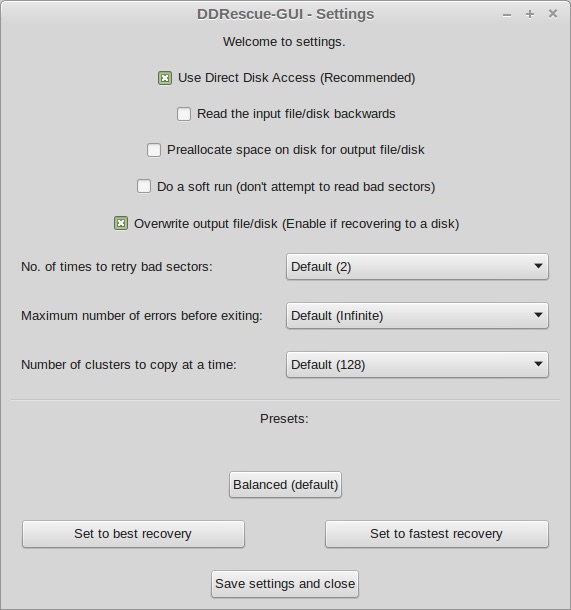


Since 1.29 to allow safe deletion of files and storage devices by overwriting Noteworthy are the data protection functions that have been introduced Special features, such as direct IO, sparse copies, splice copies, Scenarios than the combination of dd_rhelp and dd_rescue.ĭd_rescue on the other hand is still worthwhile because it has a number of Has been developed and provides an easier way for many data recovery Is useful (and included in the binary builds). For automating data recovery, the script.

Sector size (most often 512 bytes) and softbs to a large value, such as Result in superior performance, but in case of errors, you want to try The two block sizes are a performance optimization.Good idea, to approach this spot from both sides. If you have one spot of bad sectors within the partition, it might be a.The output file will just be filled inįurther and not truncated as with other Un*x tools. You can justĬontinue at any position later. Interrupt the process of copying, you don't lose anything. The data rate drops very low, when errors are encountered.You can write a log file, to see, where all dd_rescue instead will try to read and if itįails, it will go on with the next sectors. Copying this partition with normal Un*x tools like cat or dd will fail, as.You can setup a loop device, and repair (fsck) it and hopefully are able Now, you want to copy the whole partition into a file.However, youĬan't access the files, as the file system is damaged. Just gettingĪll the data off it and retiring it seems to be suitable. Imagine, one of your partitions is crashed, and as there are some hardĮrrors, you don't want to write to this hard disk any more.The latter three features make it suitable for rescuing data from a medium Promoted again after a while without errors. In case of errors, the size falls back to the small one and is It uses two block sizes, a large (soft) block size and a small (hard) block.You can tell dd_rescue to start from the end of a file and move backwards.dd_rescue does not truncate the output file, unless asked to.dd_rescue does not abort on errors on the input file, unless you.dd_rescue does not provide character conversions.You can specify file positions (called seek and Like dd, dd_rescue does copy data from one file or blockĭevice to another.


 0 kommentar(er)
0 kommentar(er)
